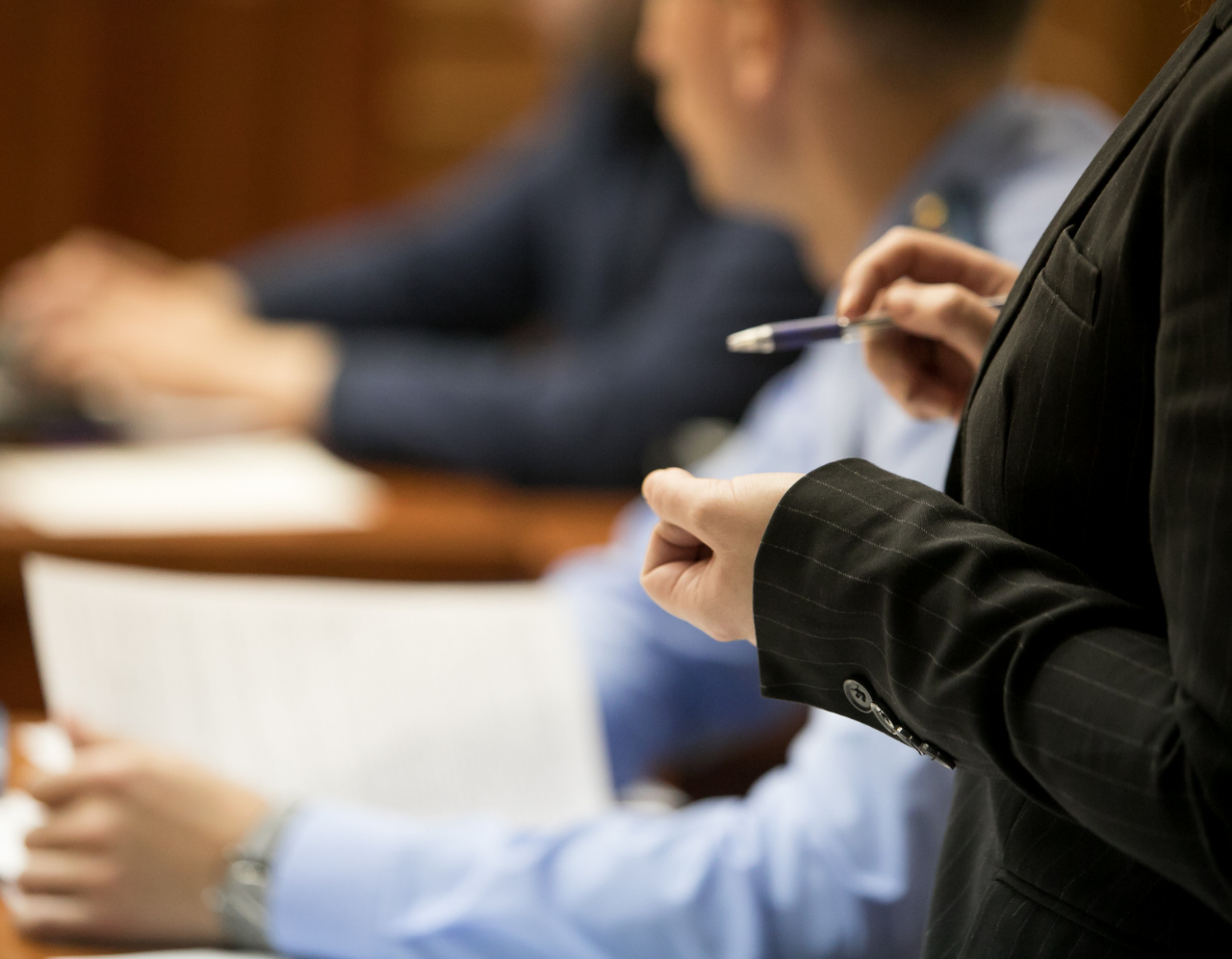Navigating the Intricacies of Trial Presentations: Tips for Seamless Distribution and Engaging Arguments
In the realm of lawful process, the art of test presentation stands as a vital component of success. The intricacies inherent in trial presentations need a fragile equilibrium of skill, finesse, and method.

Comprehending Test Purposes
To efficiently browse a test, it is crucial to have a clear understanding of the goals that require to be attained. Before stepping into the court, lawful groups must define their goals and preferred end results. These objectives work as directing concepts throughout the test, forming approaches and influencing decision-making processes.
Comprehending trial goals includes a thorough evaluation of the instance, lawful precedents, and the customer's benefits. Trial Presentations. It requires a precise assessment of the truths, recognizing vital concerns, and preparing for possible obstacles. By establishing details and quantifiable objectives, lawyers can customize their presentations and disagreements to line up with the desired results
Furthermore, a clear grip of test objectives makes it possible for legal groups to prioritize proof, witnesses, and legal debates properly. It permits the development of a coherent story that reverberates with the discretionary, reinforcing the total situation presentation.

Organizing Proof Properly
Having a clear understanding of test purposes lays the structure for organizing evidence efficiently in legal proceedings - Trial Presentations. By straightening the discussion of proof with the preferred outcomes of the trial, lawful groups can enhance their disagreements and enhance their persuasiveness. One essential aspect of arranging proof is categorization. Grouping proof based upon themes or relevance to details lawful aspects can help streamline the discussion and make complicated information more absorbable for the judge or court.
Another trick aspect in organizing proof efficiently is developing a rational circulation. Providing proof in a meaningful and sequential way can help construct a compelling story that supports the lawful arguments being made. Furthermore, using aesthetic help such as charts, timelines, or graphs can even more boost the organization of proof and aid in clearing up intricate relationships or series of occasions.
Additionally, making certain that all evidence provided is appropriate and admissible to the case is crucial. Inadmissible or pointless proof can diminish the stamina of the disagreement and possibly harm the integrity of the presenting party. As a result, a thorough review and selection process must be taken on to include only the most legitimately audio and impactful proof in the test presentation.
Crafting Persuasive Narratives
Crafting compelling stories plays a critical role in offering convincing disagreements during lawful proceedings. When creating a story for a trial discussion, it is vital to establish a clear story that highlights essential points and links them in a coherent fashion. By weaving together proof, statement, and lawful disagreements into a influential and cohesive story, legal specialists can efficiently support for their clients and raise the possibility of a favorable result in the courtroom.
Mastering Visual Aids
Reliable use of aesthetic aids is essential to boosting the impact and quality of trial presentations. Aesthetic aids, when used purposefully, have the power to simplify complicated details, reinforce bottom lines, and leave a long lasting impact on the discretionary. To grasp aesthetic aids in trial discussions, it is crucial to guarantee that they are clear, succinct, check my source and pertinent to the arguments being made.
When integrating aesthetic help, such as charts, photographs, timelines, or graphs, into a trial discussion, it is crucial to keep them visually appealing yet professional. The visuals ought to match the spoken debates, giving a visual representation of the information being talked about without overwhelming the audience with unnecessary details.
Additionally, experimenting the aesthetic help ahead of time is important to make web link sure a smooth shipment during the trial. Familiarizing oneself with the material, transitions, and timings of each visual aid can help maintain the circulation of the discussion and protect against technological problems that might develop.
Supplying Impactful Closing Disagreements
A compelling closing debate offers as the conclusion of a trial discussion, enveloping the core narrative and encouraging the court and jury in the direction of a favorable choice. Begin by outlining the primary disagreements that sustain your customer's position, stressing why the evidence provided throughout the trial supports your narrative.
In addition, including psychological allure can additionally strengthen your closing argument. By humanizing the instance and attaching on an individual level with the decision-makers, you can evoke compassion and understanding, affecting their understanding of the realities presented. Additionally, stating the lawful requirements that need to be met for a beneficial judgment can reinforce the validity of your placement. Ultimately, a well-crafted closing argument need to leave a long-term impression, compelling the discretionary to rule in your customer's favor.
Conclusion
In conclusion, mastering trial presentations entails comprehending purposes, arranging evidence, crafting stories, using visual aids, and providing impactful closing arguments. By carrying out these techniques efficiently, lawyers can provide their instance seamlessly and make engaging debates Learn More Here in the court room. It is vital to browse the complexities of trial presentations with accuracy and ability to accomplish success in lawful proceedings.
By straightening the presentation of proof with the preferred outcomes of the test, lawful teams can enhance their arguments and boost their persuasiveness (Trial Presentations). To grasp visual help in test discussions, it is crucial to guarantee that they are clear, succinct, and relevant to the arguments being made
An engaging closing debate serves as the conclusion of a trial presentation, encapsulating the core narrative and encouraging the judge and jury in the direction of a desirable choice. Begin by detailing the primary arguments that support your customer's placement, highlighting why the proof provided throughout the test supports your narrative.In conclusion, understanding test discussions involves comprehending goals, arranging evidence, crafting stories, making use of aesthetic help, and providing impactful closing debates.